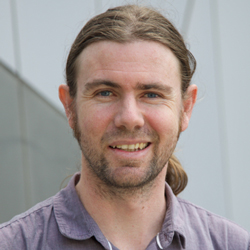Location:
Berg Family Foundation Seminar Room, Level 6, Wallace Wurth Building, Kensington Campus, UNSW Sydney
Cost
Free
Contact for enquiries
Rata Joseph, +61 (2) 9385 0900 or recpt@kirby.unsw.edu.au
Kirby Institute Seminar Series presents
 |
Associate Professor James Wood Associate Professor, School of Public Health and Community Medicine, UNSW Sydney |
|
 |
Postdoctoral Research Fellow, School of Public Health and Community Medicine, UNSW Sydney |
About your speakers
Dr James Wood is an Associate Professor in the School of Public Health and Community Medicine, with a PhD background in mathematical physics and research interests in population biology, mathematical epidemiology and translation to policy. He uses mathematical and statistical techniques to understand infectious disease epidemiology and model the effects of interventions, particular vaccines. His current research foci are modelling improved control of tuberculosis, hepatitis A epidemiology in Australia and evolution of whooping cough bacteria in response to vaccination and retrospective economic evaluation of vaccine programs.
Dr Duleepa Jayasundara is a Postdoctoral Research Fellow in the School of Public Health and Community Medicine, UNSW. He holds a PhD in Engineering (Bioinformatics) from the University of Melbourne and a BSc (Honours) in Engineering from the University of Moratuwa, Sri Lanka. Duleepa currently has research interests in the areas of mathematical modelling of infectious diseases, genetics in epidemiology and combinatorial optimisation.
Abstract
In this presentation, we discuss two modelling studies on hepatitis A in Australia. In the first study (recently accepted by Vaccine), we use a range of data sources to attribute observed rises in seropositivity to migration, vaccination and infection. While the data is primarily ecological in nature, it supports high rates of opportunistic hepatitis A vaccination in the general population, as well as migration-related increases in adults. The contribution of infection to these rises was estimated to be almost negligible over the study period. In the second study, we use a dynamic transmission model to understand changes in hepatitis A epidemiology prior to vaccination and project future incidence under a number of scenarios. This work (in progress) suggests that transmissibility of hepatitis A fell substantially within Australia during the 2nd half of the 20th century due both to demographic change and other reductions in transmission that we presume are related to public health measures. Our projections suggest hepatitis A is in an elimination phase in the general population and that this status is robust to pessimistic assumptions regarding duration of immunity and rates of future immunisation.
